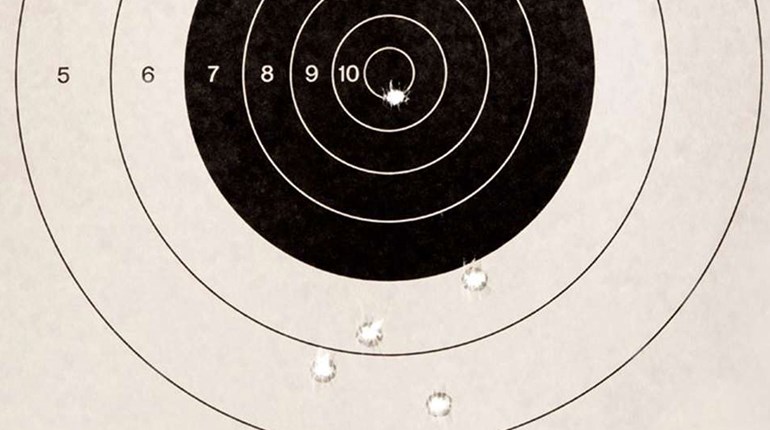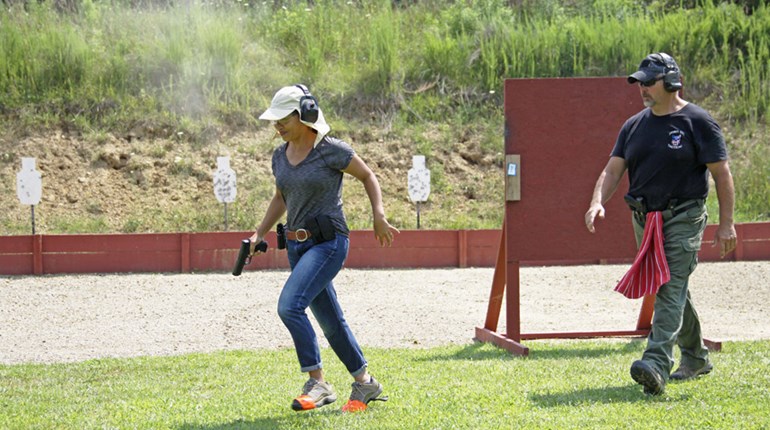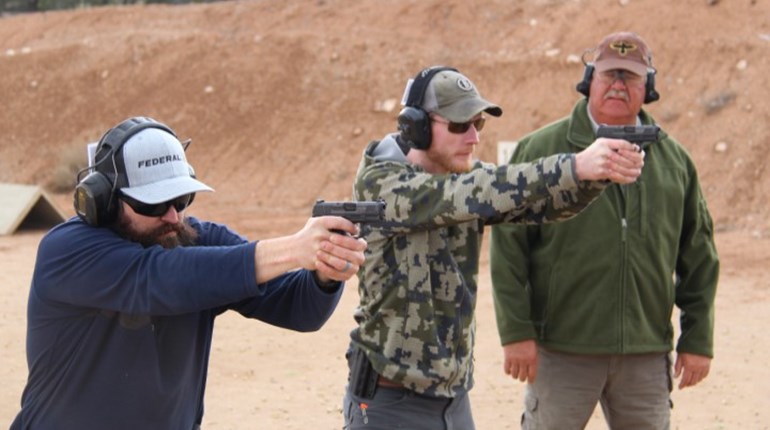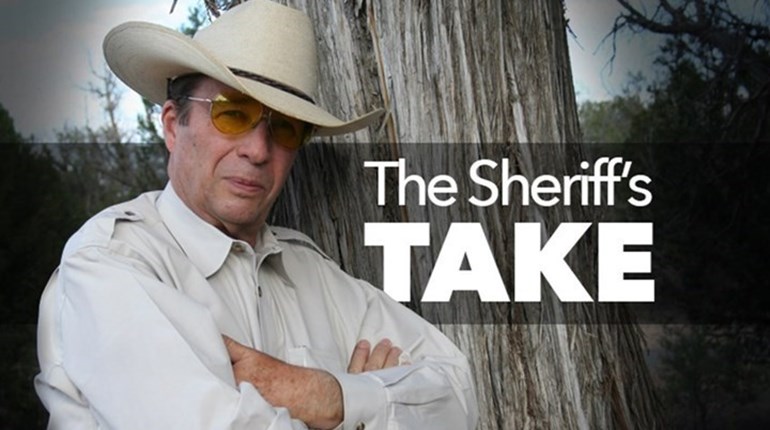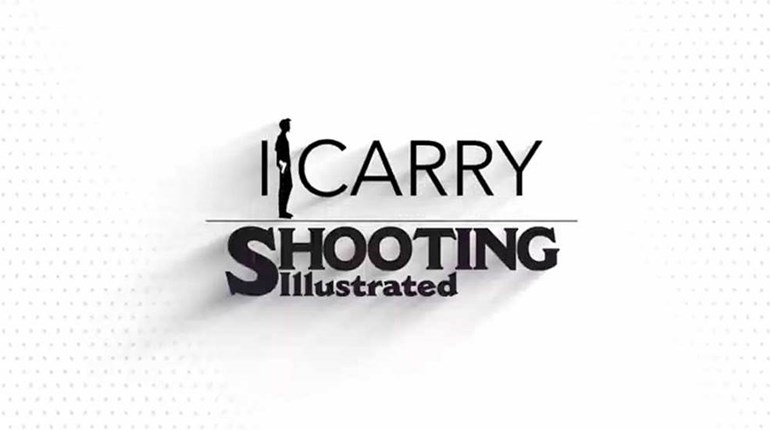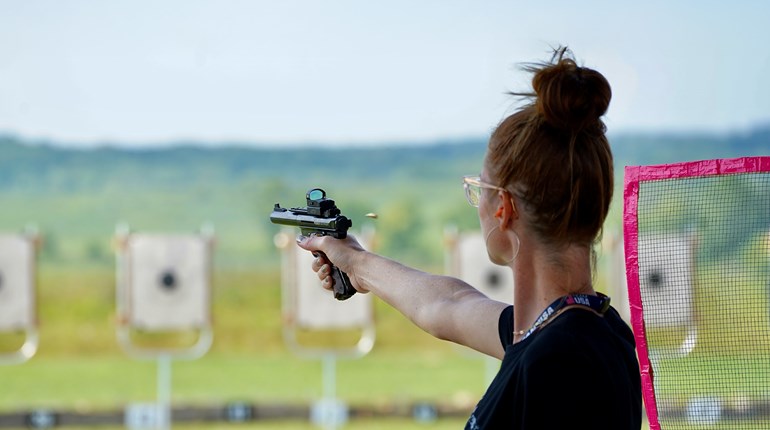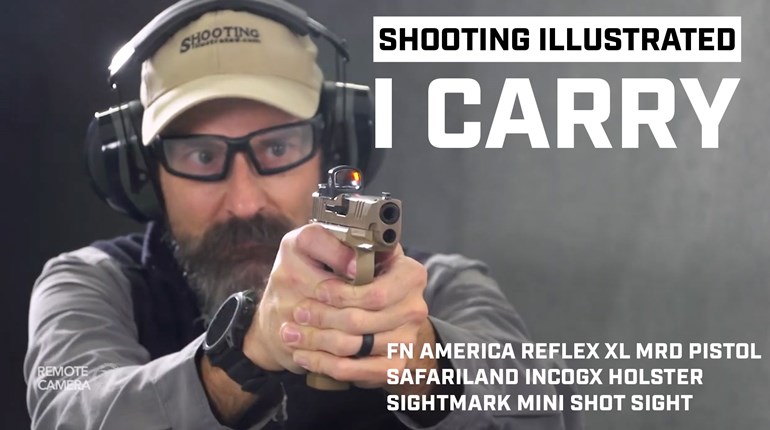
There are few of us who go to the range who don’t have work to do on improving some area of our shooting skills. Everyone, after some effort, has strengths and positive outcomes in hitting what they’re intending. In other areas of skill development, something holds us back. For many of us, it seems as if we are forced to work over and over to overcome the same problems or bad habits we’ve been attempting to address without much—or even any—improvement.
If you’re like me, we tend to go through life and make many of the same unforced errors or poor decisions while being surprised by—or resigned to—the results. It’s only once we grow weary enough of the resulting consequences that we may begin to recognize our wayward actions and make different decisions from which better outcomes may result. I’ve found, through teaching and my own training, that shooting problems are often a mirror of those decisions or habits that hold us back in life. Resolution in one area tends to influence a similar resolution in the other. I have no idea which way it works, whether resolving the life skill resolves that particular shooting problem, or if it’s the other way around. But shooting seems to highlight the hidden areas holding us back that are not plainly visible to us.
You may be thinking right about now, “What psychobabble nonsense is this guy peddling?” Well, none; I’m just sharing what I’ve observed from my own shooting and in teaching others. My job as a trainer is to assist each shooter to successfully achieve the level to which that individual aspires in his or her shooting goals. Shooting, intellectually, is a simple enough process: The loaded firearm is held in a manner that, when fired, causes a bullet to strike the desired point on the target. Easy-peasy, right? Well, yes and no.
Reviewing past mistakes is useful only so long as there is information to glean from our decisions and actions to better guide our next decision and action.
Humans are not solely rational creatures. Our emotions make up a large proportion of our perceptions and responses to the world in which we’re operating. When we go to the range, we also bring our rational and emotional elements. Sticking solely with the meat and potatoes of the fundamentals of marksmanship, many shooters don’t progress in their capabilities beyond a certain skill level because they continue to do the same thing the same way while expecting a different result. If a shooter can describe what he or she is supposed to do in the process of firing a firearm, assuming no physical impediments, yet continues struggling to improve, that suggests an unknown mental or emotional component blocking the desired improvement. Leaving that component unaddressed means a painful slog of frustration and defeat, something most people will not participate in for long. It may well be the reason many people own a firearm but don’t practice with it.
I regularly see shooters on the range swearing at and/or berating themselves, shaking their heads, grimacing or reacting to a perceived failure, displaying a wide degree of disapproval of the outcomes they produced. Or, the shooter is doing really well at one distance or in a particular skill, but falls apart at slightly longer ranges or when the skill has to be applied differently. Whether it is missing a shot or flubbing a draw from a holster—or anything else that fails to meet expectations of perfection—expressions of anger or disappointment ensue. None of these negative displays, and the beliefs that underlie them, help us become a better shooter (or a better person, for that matter).
In homage to the wisdom of Yogi Berra, shooting is 90 percent mental and the other half is physical. If we can tame, understand, and/or change our mental and/or emotional responses to the undesirable outcomes holding us back, the “other half” of shooting often falls into place.
Anyone who spends any time in my classes will tell you they’ve heard, “How is this like your life, and how is that working for ya?” After a short explanation of what I’m seeing on the range, almost universally the individual will say, “Yeah, you’re right. That’s exactly what I do when I … ” Suddenly the context of why the behavior or action preventing them from hitting or performing up to a desired task becomes clearer. As the fog around the problem clears, the individual gains a better understanding of how to adjust the approach for accomplishing the next shot to become more successful. Let’s look at some of the most common areas I’ve noticed where shooting may be like our lives.
Behavior: The shooter has a decent group on target and then has a flyer, resulting in head shaking, an expletive or berating oneself by saying something like (keeping it mild), “Idiot!” The question is, “How is this like your life, and how is that working for ya?”
I gently tell the shooter that, on my range, no one is permitted to shake his or her head or berate anyone, including him or herself—that’s my job (hopefully perceived as a bit of humor). I explain that where a bullet hits a target is simply “information.” A wise man once told me that, “Facts are friendly. Facts are neither good nor bad. Facts are information. If I want a different result, I change the input to my process.” With a flyer, we know for a fact that the moment the bullet left the muzzle, the bore axis of the barrel was aligned with the point where the bullet struck the target. Engaging the process of aligning the bore axis to the desired striking point through the firing sequence ensures the bullet hits the intended point on the target. Because shooting and hitting involves a process of focus of attention and manipulation of the firearm, where in that process did you change what you’d been doing before? All we’re doing on this range is executing a process to create a result. If I don’t get the result I intend, I modify the input into the process based on the information I gleaned from every shot I’ve ever fired, including the last shot.
Behavior: The shooter continues to complain about having “messed up a shot” or failing to execute some new variation of a technique. Their performance continues to degrade. “How is this like your life, and how is that working for ya?”
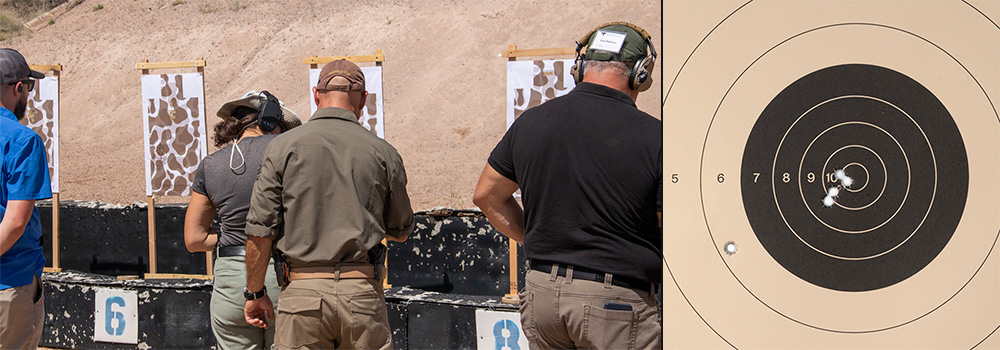
Every person underperforms occasionally while shooting. In fact, few will ever live up to expectations of putting 100 bullets through a single hole in the target at an Olympic champion’s cyclic rate-of-fire. Some shooters sometimes do well for a while, make a “mistake,” and then cannot recover for the rest of the day. Holding on to a perceived “failure” or “mistake” is living in the past. The only reason to think about a miss or a hit is to mentally track what your process was that led to the hit or the miss, discover where there was a change, then adjust your process for the present round in the chamber and let any attached meaning to that last bullet go. This also applies to the overall score or outcome.
Reviewing past mistakes is useful only so long as there is information to glean from our decisions and actions to better guide our next decision and action. Dwelling on them or endlessly regurgitating those “failures” is not useful and serves only to block awareness of what is present in our lives. Simply put, if your focus is on what happened in the past, then your focus is not on what’s happening at present. The fact is, we fight with the round that is in our chamber now. Everyone makes a mistake. Everyone fails sometimes. Like past decisions and actions taken in our lives, we can’t take back a bullet once fired on the range. We can only learn from it.
Behavior: After advancing from the 125-yard line to the 150-yard line, suddenly the group balloons to four times the size of the 125-yard group. Returning to the 125-yard line, the group shrinks back to the previous size, but a second time at the 150-yard line has the group again expanding. How is this like your life, and how is that working for ya?
While the example above is of a rifle shooter, I see this at close distances as well. I begin a new handgun shooter’s live fire from the 2-yard line, firing one round at a small bullseye, then stepping one step back and firing again, continuing back with each hit. Beginning this way, it is not difficult for most shooters to fire an inch or so group after several steps out to the 5- or 6-yard line. However, like the behavior between the 125- and 150-yard lines with a rifle, at some point as the shooter moves one step back, fires, and that group blows up to 5 inches. What happened within that single step?
“I don’t know,” is the most common answer to the question, “What are you doing differently?” When asked if there was a change in his or her self-talk after moving back, the response is often, “I guess I don’t think I can hit the bullseye from here.” Most of us have self-limiting beliefs, whether it is about the amount of money we can make, what we can achieve or that we can’t (fill-in-the-blank). These self-limiting beliefs cause us to have defeatist self-talk, resulting in abandoning our process—and proven earlier successes—turning our focus inward. This generates doubt, causing us to change what was a successful process into something else, causing less than the desired result. When shooting, the limiting belief results in a careless shot fired, with the underlying rationale of, “I can’t hit it anyway.”
The fix? Turn that inner focus and self-talk back to the process that made us successful. Look at reality and not our projected beliefs: “My process allowed me to hit where I intended at five steps (or 125 yards). Of course, I can do the same process at six steps (or 150 yards).”
Return to the fundamentals. Repeatedly saying your fundamentals out loud, “Grip … looking at the front sight … grip … front sight ... (boom).” By returning to the basics and verbally reinforcing the process, we can overcome that false belief of the target being “too far” to be successful. It creates resiliency, too, because now we have a life-hack against projected beliefs of insufficiency.
Improving our shooting abilities is a lifelong quest. Changes occur over time if we can discover what is holding us back. Sometimes, it’s simply a bad habit that is pointed out by a coach. Sometimes, there are issues with our shooting that are habitual and have a deeper cause other than fixing a mechanical flaw in our process.
If we discount the emotional speed bumps every human life has, however they might manifest on the shooting range, we handicap ourselves in our progress to becoming better shooters. Many times, epiphanies of our unhelpful shooting behaviors suddenly unlock insights into our self-created problems in our everyday lives. If we can peer into the reasons, we do things and change those that hold us back, we can progress and stop repeating the same old negative behaviors. Paying attention to these emotional roadblocks can pay dividends both on a target and in our lives. It makes sense to find answers to the question, “How is shooting like your life, and how is that working for ya?”










